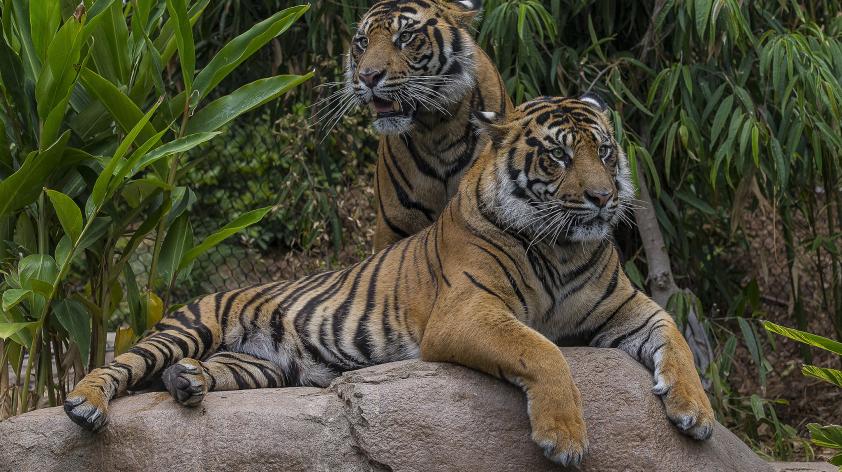
Monitoring Tigers at the San Diego Zoo Safari Park
Since the 2014 opening of the new Tiger Trail at the San Diego Zoo Safari Park, we have been monitoring the behavior and hormones of our amazing Sumatran tigers. We currently rotate six tigers throughout three large outdoor enclosures that make up Tiger Trail. During their time spent outdoors the tigers encounter the sights, sounds and smells of other tigers, animals and people. Our work follows behavioral and hormonal changes that reflect the tigers’ possible responses to these daily experiences.
Each summer, the Behavioral Ecology Division research team at the San Diego Zoo Institute for Conservation Research is joined by student fellows. For the past two years, we’ve had our summer fellows observe the tigers in their outdoor enclosures in order to collect behavioral data. These observations are recorded using behavioral scoring sheets and stopwatches by utilizing an ethogram (a ‘dictionary’ of potential tiger behaviors). The summer fellows spend many hours monitoring and noting the array of behaviors exhibited by our tigers. During this period, the cats’ keepers collect tiger fecal samples (the tigers are blissfully unaware of this!) for hormone analysis.
When they’re not watching the cats, the summer fellows process fecal specimens in the lab—a task involving a variety of steps to get the hormones of interest out of the samples. This non-invasive way to test hormones involves completely drying the samples, then smashing and pulverizing them. Next, the process of extracting the hormones begins using a combination of chemicals and physical force (this is not Jedi training!). Finally, chemical tests are undertaken on each of the samples, yielding a determination of hormone concentrations. Hormone level results are then analyzed along with the recorded behavioral data in order to gain a deeper understanding of the overall responses of our tigers to the sights, sounds, and smells of life at the Safari Park.
The hormone and behavioral data collected on our tigers is also cross-referenced with daily information logs that are kept by the husbandry staff. Overall results from this approach assists keepers in their husbandry and management decisions for the cats. Having a multi-year study allows us to get more robust information and monitor real changes that can occur from the very beginning of a new exhibit and any other changes that occur—for example, when our collection grows larger with the arrival of cute new tiger cubs.













